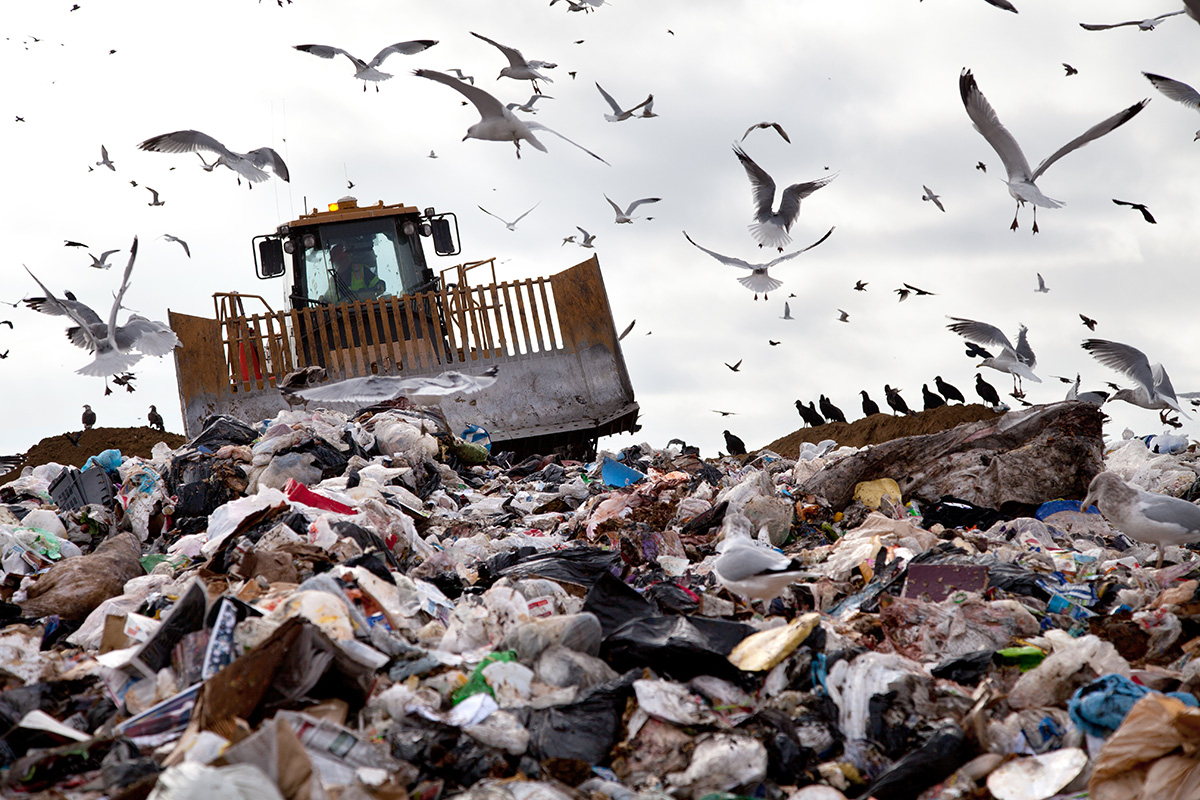Most climate strategies rightly focus on reducing or removing carbon dioxide. But cutting CO₂ alone won’t be enough to meaningfully slow global warming.
The world has already surpassed the 1.5°C temperature rise threshold, and if we have any hope of staying below 2°C — or ideally dipping back below 1.5°C — then cutting methane emissions needs to be a strategic focus as well.
According to the Global Methane Pledge, even a complete shift to a zero-carbon economy would deliver just 30% of the methane reductions needed by 2050.
"Focused strategies specifically targeting methane are thus also required to achieve sufficient mitigation," says the GMP.
Targeted methane mitigation is essential, and landfill gas (LFG) projects are among the most effective tools available today.
By preventing the methane that occurs as a byproduct of landfill decomposition from reaching the atmosphere, these landfill gas carbon projects serve a critical purpose in limiting global temperature rise.
The formation and impact of landfill gas
In composting, organic matter decomposes in the presence of oxygen, releasing CO₂, often considered part of the natural carbon cycle. In contrast, landfills create anaerobic conditions, where decomposition produces methane, a far more potent greenhouse gas.
With composting, the presence of oxygen allows microorganisms to break down carbon-rich organic matter, releasing CO₂ as a byproduct that returns to the atmosphere. Technically, this process creates emissions; however, it's often considered carbon neutral, as the carbon absorbed during the growth of organic material is eventually returned in a sustainable cycle. The presence of hydrogen in organic matter also means aerobic digestion creates water as a byproduct. The heat from digestion causes this water to return to the atmosphere as vapor, completing the natural water cycle.
In a landfill, however, the lack of oxygen means microorganisms digest organic matter anaerobically, producing byproducts like CH₄, better known as methane.
What’s so bad about methane? It’s far more potent than carbon dioxide when it comes to trapping heat in the atmosphere, especially in the short term. Methane has roughly 28 times the global warming potential of an equivalent amount of CO₂ over 100 years, and around 81 times the warming potential over 20 years, according to the Intergovernmental Panel on Climate Change (IPCC).
That's why emissions are typically expressed as CO₂e, which converts the impact of super pollutants like methane into an equivalent amount of carbon dioxide.
Although methane breaks down into CO₂ and water after approximately 12 years, the short-term spike in warming can have long-lasting effects, especially as the world races to prevent the climate from reaching tipping points. In other words, releasing methane not only increases CO₂e emissions but also shortens the window to achieve net-zero goals and prevent further damage.
The Role of Landfill Gas Projects
Fortunately, there are ways to capture what would otherwise be harmful methane from landfill sites and prevent it from entering the atmosphere.
LFG projects capture methane by drilling wells into landfill sites. The gas is then transported to a processing facility, where it can be flared, used to generate electricity or heat, or upgraded to renewable natural gas (RNG).
Some LFG projects conduct a controlled burn called flaring to destroy most of the methane. Others use LFG to generate renewable electricity through combustion technologies, such as gas engines or gas turbines. LFG can also be converted into heat by burning it in a boiler, potentially offering a cleaner alternative to fossil fuels for heating.
Another emerging option is to convert LFG into renewable natural gas (RNG), which can be used as an electricity, heat source, or transportation fuel. This process typically involves increasing the concentration of methane by extracting CO₂ and other gases, such as nitrogen, and then injecting the upgraded RNG into a gas pipeline.
While LFG projects may carry some added complexity, they are a vital solution for addressing emissions that would otherwise come from waste. That’s not to say landfills should be inherently accepted. Ideally, more organic waste would be diverted from landfills altogether, and businesses and individuals would also reduce inorganic waste. However, the reality is that waste management systems and behaviors won’t change overnight.
Why LFG Projects Matter
In the U.S., municipal solid waste landfills are responsible for nearly 15% of methane emissions, according to the EPA. And while long-term solutions like composting and source reduction are essential, landfills aren’t disappearing overnight. In the meantime, LFG projects can significantly reduce emissions from waste that’s already in the ground.
Landfill gas projects create high-quality carbon credits
By preventing methane from reaching the atmosphere, LFG projects can generate carbon credits—but not all credits are created equal. To bring greater confidence to the market, the Integrity Council for the Voluntary Carbon Market (ICVCM), an independent governance body for the voluntary carbon market, has developed the Core Carbon Principles (CCP), a global benchmark for high-quality credits.
In particular, the ICVCM's Core Carbon Principles (CCP) provide a framework that carbon-crediting programs can use to recognize high-quality projects.
Several LFG methodologies have already received CCP approval—meeting rigorous standards for governance, emissions impact, and sustainable development. This gives buyers confidence that they’re supporting credible, high-impact projects that truly move the needle on climate.
Why Choose the Right Developer?
Project quality goes beyond methodology—it also hinges on the developer’s experience, monitoring rigor, and market credibility.
Anew Climate is the largest LFG project developer in North America and was named Project Developer of the Year (Waste Sector) by the Climate Action Reserve in 2025. Our portfolio includes CCP-approved projects and decades of expertise in delivering high-integrity carbon solutions.
Take Action
If your organization is looking to make measurable climate impact today—especially in hard-to-abate sectors—landfill gas carbon credits offer a proven, science-backed path forward.
Talk to a carbon advisor at Anew Climate to explore how LFG and other high-quality carbon solutions can complement your emissions reduction goals.


